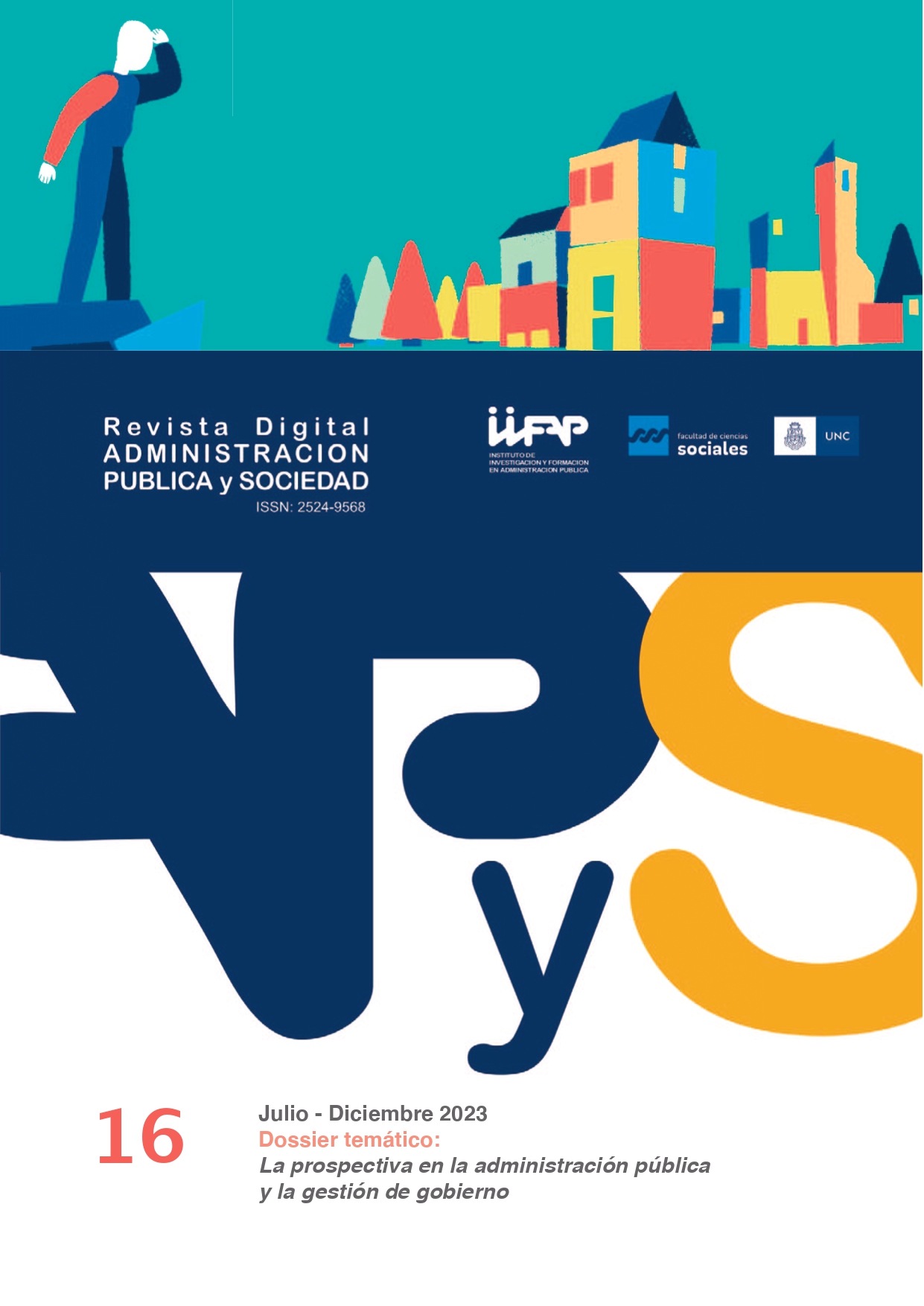The social question of alimentary supply and fruithorticultural markets in Argentina. Marketing paterns and regulatory bias.
Main Article Content
Abstract
In the present work we analyze the changes in the regulation of the issue of the supply of horticultural products in Argentina, from the transformations of the commodification patterns. From a perspective focused on the Social Studies of the Economy, the wholesale markets of fruits and vegetables will be analyzed. To this end, its economic evolution is considered here in terms of current accumulation patterns from the mid-20th century to the present. The research was carried out based on the analysis of national, provincial and local policies and regulations and on a national survey of supply markets. The purpose and contribution of this research lies in demonstrating the risks of business concentration and its impact on the supply or on the Argentine domestic market. Examining the patterns of consumption and production related to this complex landscape sheds light on the vacancies that remain to be filled in this vast field of studies.
Article Details

This work is licensed under a Creative Commons Attribution-NonCommercial-ShareAlike 4.0 International License.
Authors who publish in this journal accept the following terms of the copyright policy:
- Authors shall retain their copyright (including copyrights) and shall grant to the journal the right of first publication of their work, which shall simultaneously be subject to the Creative Commons Recognition License: No commercial use of the original work or any derivative works is permitted, distribution of which must be made under a license equal to that which governs the original work.
- Authors may adopt other non-exclusive license agreements for the distribution of the version of the published work (e.g., placing it in an institutional repository or publishing it in a book) provided that the initial publication in this journal is indicated.
- Authors are allowed and encouraged to disseminate their work through the Internet (e.g., in institutional repositories or on their website) after the publication process, which may lead to interesting exchanges and increased citations of the published work. (See The Effect of Open Access).
How to Cite
References
Almeida Cunha, A. (2012) Seguridad Alimentaria e inserción productiva: El nuevo rol de las Centrales Mayoristas a partir de las lecciones del ejemplo brasileño. FAO
Balbi, F. A. (1998). El modelo como carta mítica. Acerca de algunos presupuestos habituales en el análisis de cooperativas. Cuadernos De antropología Social, (10).
Barbero, L. (2012) Estudio sobre hábitos de consumo de frutas y verduras en los consumidores cordobeses. Córdoba ADEC
Block, F. (1994) “The Roles of the State in the Economy”, en Handbook of Economic Sociology, ed. Neil Smelser et all, pp. 691-710
(2011) “Introduccion” en La Gran Transformación, Karl Polanyi (Autor). FCE
Boyer, R. (1992) La teoría de la regulación. Alfons el magnanim
(2007) Crisis y regímenes de crecimiento. Miño y dávila
Decreto-Ley N.º 19.227 de Mercados de Interés Nacional (1971) Poder Ejecutivo Nacional
Elena, Eduardo (2012) Guerra al agio: El problema de la domesticación del comercio en la Argentina del primer peronismo (1943-1945). Apuntes de investigación del CECYP, 16 (21), pp. 13-47.
Duffy, C. y Weber, F. (2012) Más allá de la gran división. Sociología, etnografía y economía, Buenos Aires, Antropofagia
Elias, N. (2012) El proceso de la civilización. FCE
FAO (2008) Codex Alimentarius. Directrices para la validación de medidas de control de la inocuidad de los alimentos. CAC/GL 69-2008
Flick, U. (2018) Doing Triangulation and Mixed Methods. SAGE
Gonzalez, M. A. (2013). La inocuidad en el Plan Nacional de Seguridad Alimentaria y Nutricional: análisis orientado a la valoración del concepto. Diaeta, 31(145), 15-21.
INDEC (2020) Encuesta nacional de gastos de hogares 2017 - 2018. INDEC
Kaplan, D. (1976) “La controversia formalistas-sustantivistas de la antropología económica: Reflexiones sobre sus amplias implicancias” en Godelier, M. (comp.). Anagrama
Ley N.º 17.422 creación del Mercado Central de Buenos Aires (1967)
Milanesio, N. (2020) Cuando los trabajadores salieron de compras. Nuevos consumidores, publicidad y cambio cultural durante el primer peronismo. Buenos Aires, Argentina: Siglo XXI.
Narotzky, S. y Besnier, N. (2020) “Crisis, valor y esperanza. Repensar la economía”.
Cuadernos de Antropología Social N° 21, pp. 23-48
Neffa, J. C. (1998) Modos de regulación, regímenes de acumulación y sus crisis en Argentina (1880-1996). Buenos Aires, Argentina; Eudeba
Perez Martin, J. y Barsky, A. (2021). La planificación del abastecimiento alimentario a la gran ciudad: Marchas y contramarchas del Mercado Central de Buenos Aires (1960-2019). Mundo Agrario 22 (50), e172.
Polanyi, K. (2011) La gran transformación. Orígenes políticos y económicos de nuestro tiempo. FCE
Revista Internos (5/03/2021) “Fenaomfra se desvinculó de came” https://www.revistainternos.com.ar/2021/03/fenaomfra-se-desvinculo-de-came/
Vasilachis, I. (1992) Métodos cualitativos I. Buenos Aires: CEAL
Viteri M. L., Campetella A.L. (2018). Mercados Mayoristas de Frutas y Hortalizas en la Argentina: Una mirada desde el Campo Social. Revista Horticultura Argentina 37 (92): 61-76.
(2019). Mercados mayoristas: mucha más que ventas de frutas y hortalizas. En Viteri M. L., Dumrauf S., Moricz M. (Eds.) Mercados: diversidad de prácticas comerciales y de consumo (pp. 27-36). Buenos Aires : Ediciones INTA, 2019.
Viteri M.L., Ghezán G. (2011). Mercados mayoristas de frutas y hortalizas frescas en Mar del Plata: dinámica y evolución de 1999-2012. VII Jornadas Interdisciplinarias de Estudios Agrarios y Agroindustriales. Buenos Aires.

